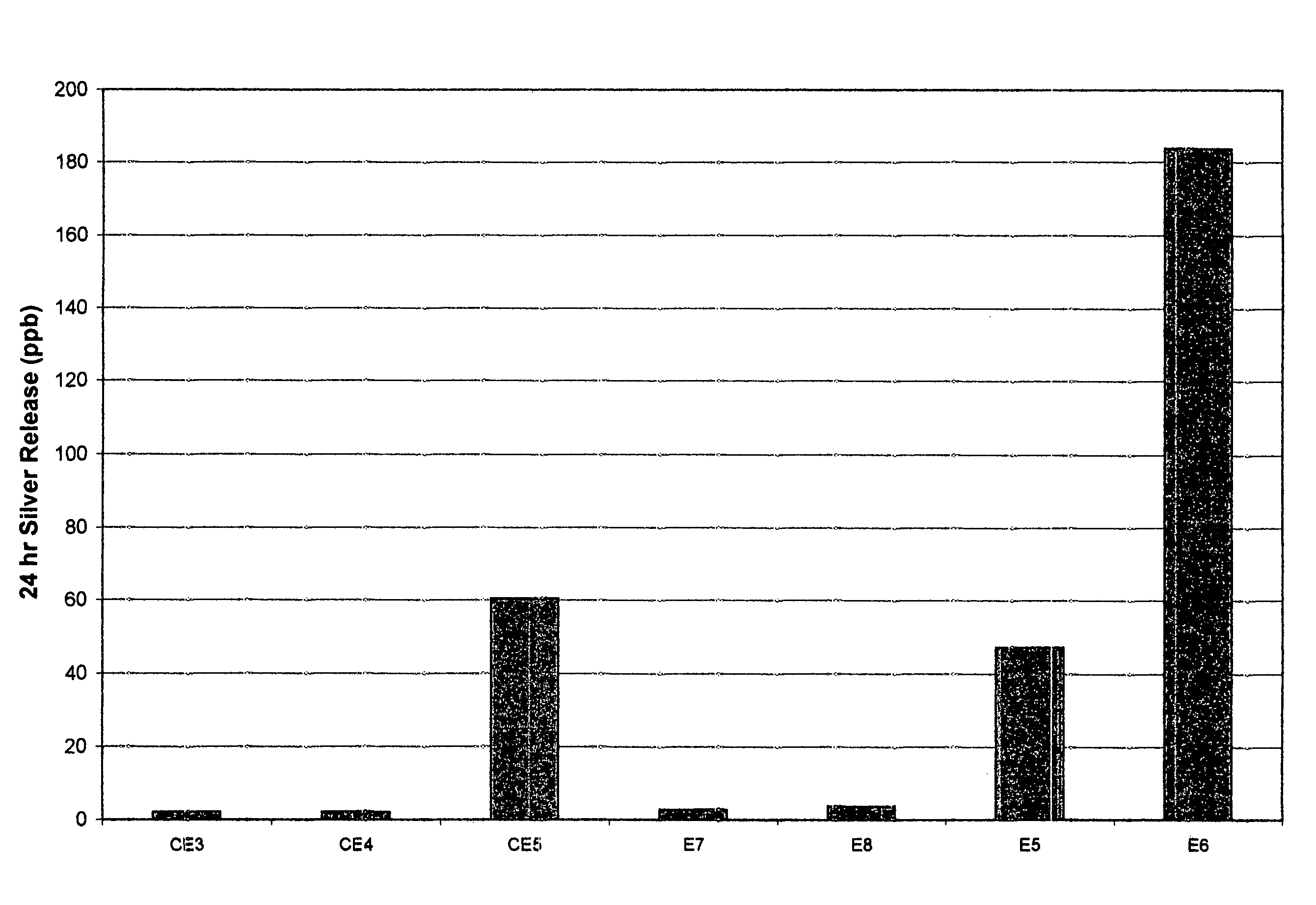Antimicrobial cements and cementitious compositions
a technology of cementitious compositions and additives, applied in the field of inorganic antimicrobial additives and mortars, cement can solve the problems of degrading and breaking and most insidious bad actors on hardened cements, mortars and cementitious compositions
- Summary
- Abstract
- Description
- Claims
- Application Information
AI Technical Summary
Benefits of technology
Problems solved by technology
Method used
Image
Examples
examples 5-8
, Comparative Examples CE3-CE5
[0051]Two sets of antimicrobial gypsum additive particles were made as in Example 1 except that the amount of the antimicrobial agent was increased to give a concentration of 7.7 wt % and 20.0 wt % AgION AK10D in gypsum. Again the ground particles were dried at 40° C. overnight and then sieved using an 80 mesh screen to remove large particles.
[0052]A second set of comparative and inventive antimicrobial polyurethane cements were prepared and evaluated for ion release. This time the polyurethane cement matrix evaluated was that sold by Sherwin Williams Company of Cleveland, Ohio under the tradename Fastop S. This too is a three part system comprising an aqueous emulsion of a polyol (Part A), an isocyanate (Part B) and a cement mix (Part C). The antimicrobial agents evaluated were pre-blended with the Part C to obtain a substantially homogeneous mixture. Parts A and B were then mixed in their proper proportions for about 1 minute and then the Part C / antim...
PUM
| Property | Measurement | Unit |
|---|---|---|
| particle size | aaaaa | aaaaa |
| particle size | aaaaa | aaaaa |
| wt % | aaaaa | aaaaa |
Abstract
Description
Claims
Application Information
 Login to View More
Login to View More - R&D
- Intellectual Property
- Life Sciences
- Materials
- Tech Scout
- Unparalleled Data Quality
- Higher Quality Content
- 60% Fewer Hallucinations
Browse by: Latest US Patents, China's latest patents, Technical Efficacy Thesaurus, Application Domain, Technology Topic, Popular Technical Reports.
© 2025 PatSnap. All rights reserved.Legal|Privacy policy|Modern Slavery Act Transparency Statement|Sitemap|About US| Contact US: help@patsnap.com


